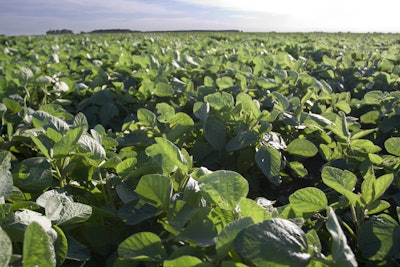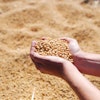
Soybean prices soared June 30 after a much-anticipated acreage report by the U.S. Department of Agriculture (USDA) revealed an unexpected drop in soybean acreage.
Total area planted in soybeans dropped 5% to 83.5 million acres, according to the June 30 report. Soybean prices exceeded US$15.50 on July 3, the highest markets have seen since August 2022.
Corn acreage rose 6%, claiming at least some of the land that was expected to go to soybeans this year. Ideal planting conditions this spring likely led producers to plant more corn acreage than they had planned, because corn typically yields more consistent earnings for U.S. farmers than soybeans, said Marty Ruikka, president of The ProExporter Network.
Soybeans also lost ground to wheat this spring, Ruikka told the U.S. Soybean Export Council (USSEC) during a recent webinar. Wheat has commanded a premium since the onset of the Ukrainian conflict, Ruikka said, which likely contributed to the 9% increase in wheat acreage reported by the USDA.
Farmers who spoke to the USSEC on July 2 generally agreed with Ruikka’s assessment. Stan Born, chairman of the USSEC board and a soybean and corn farmer from Illinois, said farmers in his area had “perfect” planting conditions this April. However, until recently the area has suffered from an extended dry spell that began in May. More recent showers have provided relief, Born said, but the lack of moisture seems likely to cut into this year’s yields.
Mike McCranie, also a USSEC board member and a farmer in South Dakota, said that although a record-setting snow pack delayed planting in his area this year, it too has struggled with dry weather. Although area farmers had fewer acres of prevented planting this year than last, he said, some fields had trouble germinating due to low soil moisture.
“We had 15 minutes of spring it seemed like and then we went into summer,” McCranie said. “The heat stayed and we had no precipitation whatsoever until we were past June 10.”
USDA has yet to update its yield projections for the year and continues to maintain trend-line estimates, but Ruikka said it is widely understood that the weather in recent weeks has not supported this. Typically, the USDA adjusts its yield estimates in August, but it is possible the U.S agency could update its figures this month in response to crop conditions.
It is also possible, Ruikka said, that the U.S. could see demand for soybeans increase if Ukraine is unable to meet its own acreage targets this year, Ruikka said. While Ukrainian farmers have generally outperformed expectations since the onset of the war, Ruikka said he suspects this could be the year the conflict with Russia finally catches up with them.
“It is going to be a challenging year to get everyone’s oilseed needs met,” Ruikka said.













